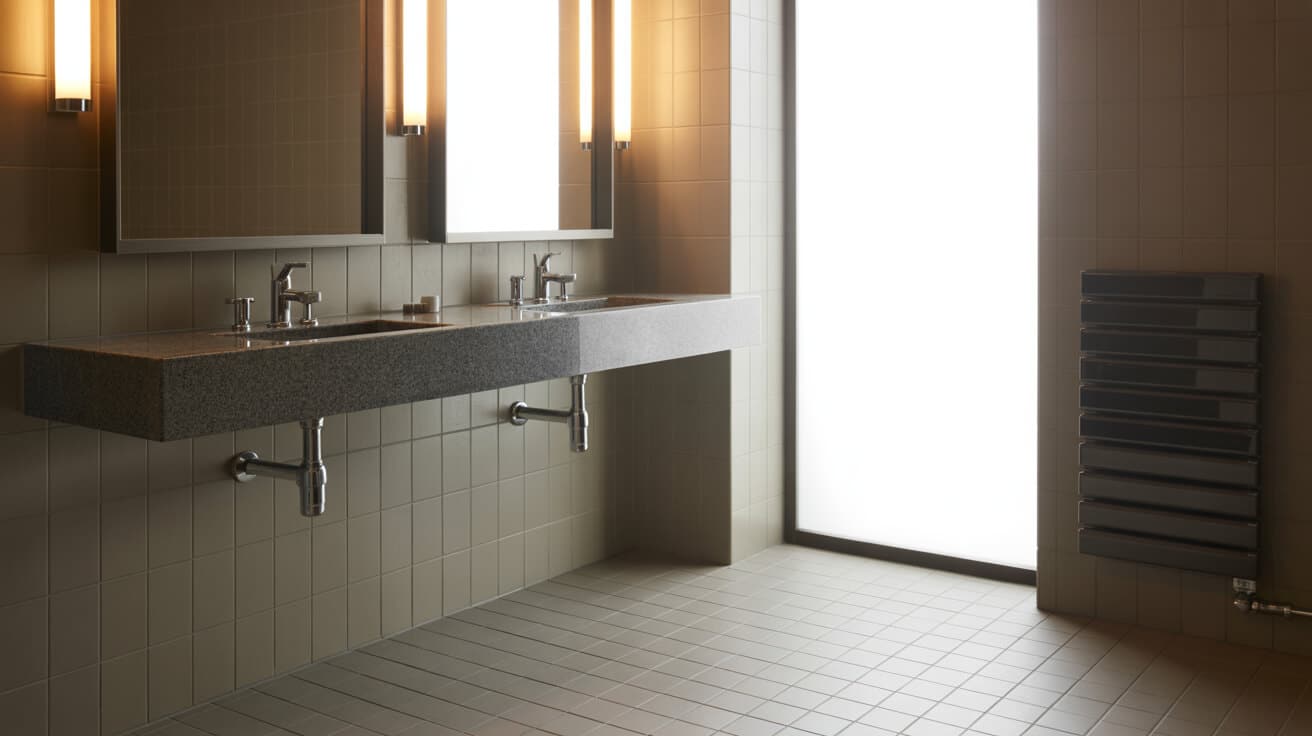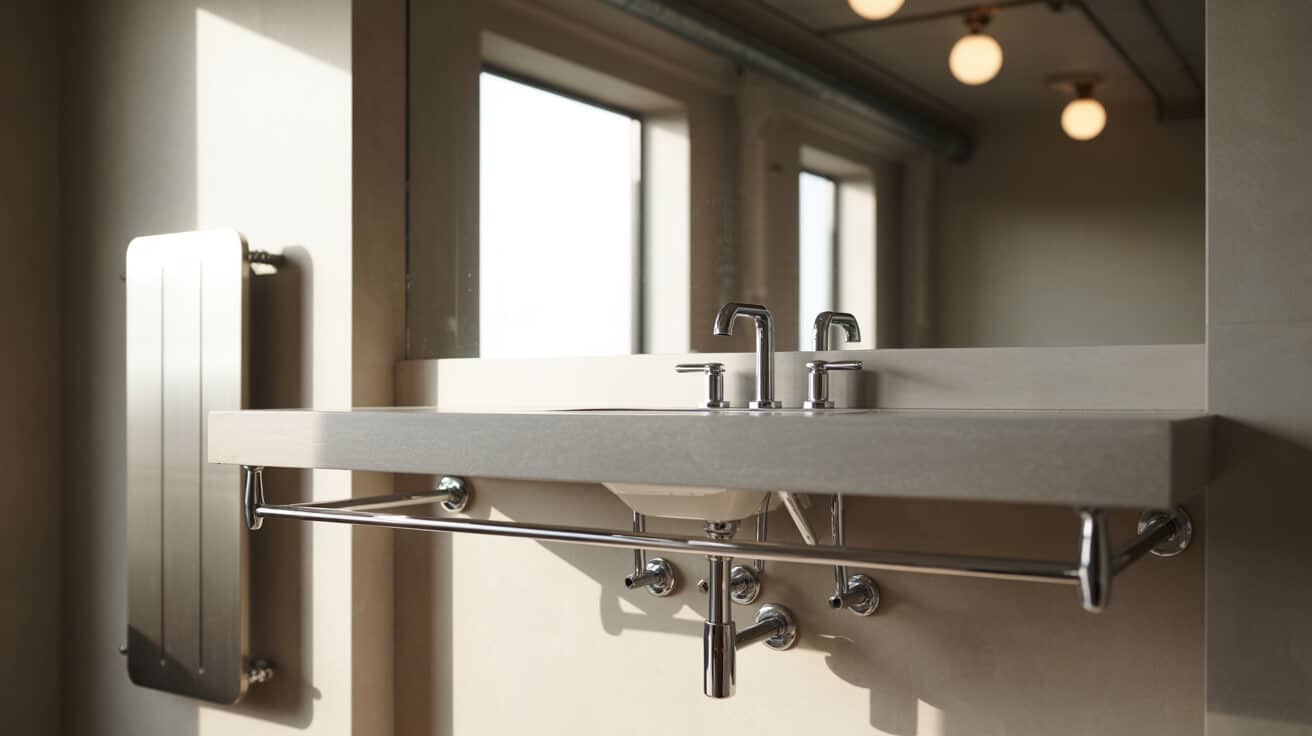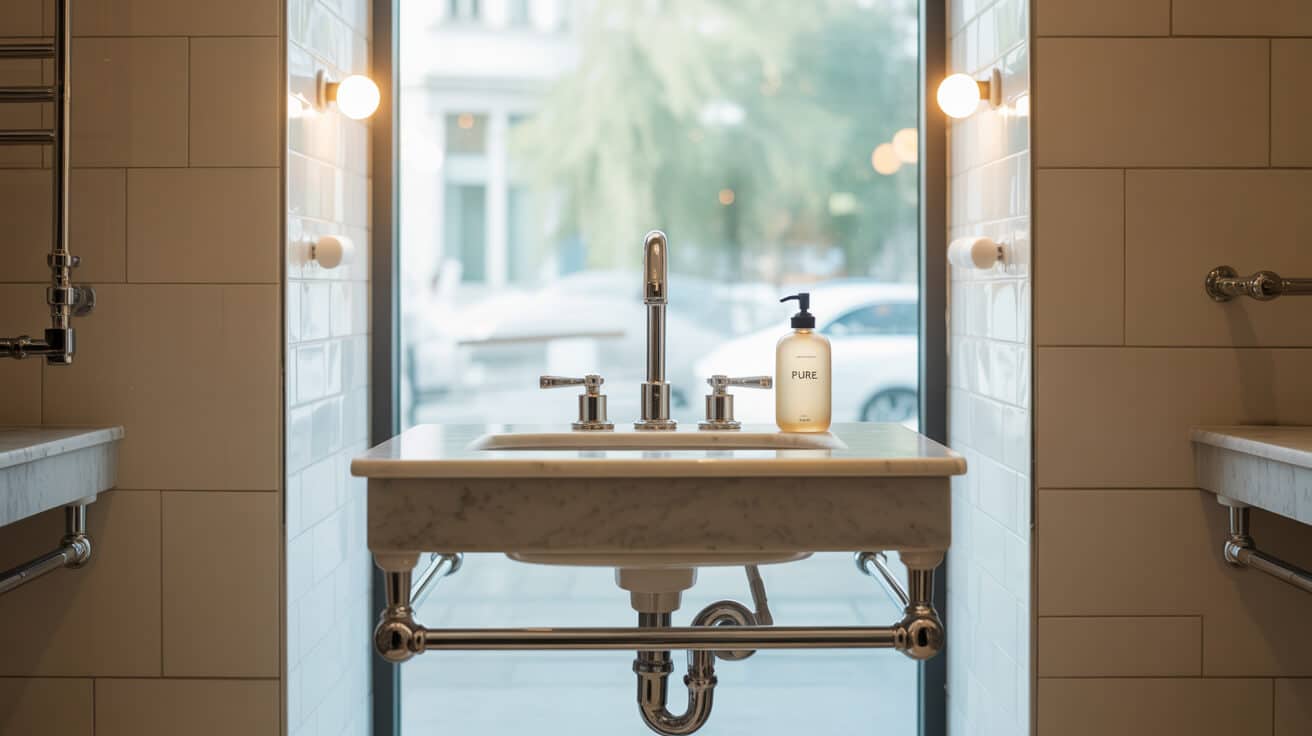Modern shop plumbing systems integrate potable water distribution, effective wastewater management, and advanced amenities for staff and customer use. The infrastructure adapts to shifting occupancy, frequently changing layouts, and heightened oversight from building and health authorities. For your premises, reliability—combined with compliance, instantaneous access to documentation, and minimal service interruptions—defines the true value of high-quality commercial plumbing.
Etymology or name origin
The word “plumbing” is sourced from the Latin plumbum (lead), a material once used in pipework, and persists in formal construction nomenclature. In a retail context, “shop plumbing” conveys a distinct category wherein service, repair, and compliance routines are oriented to the rhythms of commercial tenancy, regulatory cycles, and multi-user public spaces. Industry terms such as “retail fit-out plumbing,” “backflow risk zoning,” and “Doc M pack” reflect the evolution of language around shop-specific challenges.
Overview / context
Shop plumbing encompasses the engineering and operation of:
- Pressurised cold and hot water delivery for staff amenities, customer washrooms, and point-of-use appliances,
- Drainage systems spanning washbasins, toilets, kitchenettes, and specialty installations,
- Public health protection through anti-contamination barriers,
- Asset management and compliance reporting to support your operational obligations.
Retail plumbing is influenced not only by property footprint—ranging from high-street units to multi-level flagship stores—but by how your lease structures liability for facilities, and by the expectations of customers and regulatory bodies. The integration with broader building systems, such as heating and ventilation, is standard, requiring technical adaptation according to property scale, age, and intended use. Plumbers 4U’s expertise supports your organisation in aligning facility performance with comfort, safety, and legal norms.
History
Origins and early adoption
Commercial plumbing in shops originated as a functional offshoot of urban water supply expansion in the 19th century. Simple handpump or gravity-fed systems provided for staff needs; the advent of public-facing amenities followed legislative pressure tied to hygiene and customer welfare.
Regulatory standardisation and material evolution
Over the 20th century, mandatory provision of potable water and regulated drainage asserted itself as core to public health. Pipe materials progressed from lead, through copper, to modern plastics and multilayer composites. Legislative frameworks like the Water Regulations Advisory Scheme and updated Building Regulations have increasingly specified design, documentation, and certification protocols.
Contemporary innovation and integration
Contemporary shop plumbing leverages modular components—enabling phased tenant changes and rapid pop-up installations—and includes automated fixtures, advanced backflow prevention, and rigorous zoning for customer, staff, or food-service areas. Digital documentation, surveillance, and real-time pressure monitoring reflect a convergence of smart property management with traditional mechanical trades.

Concept / description
A typical shop plumbing system consists of a mechanical and regulatory architecture that includes:
- Water supply lines: Both mains-fed and pressure-boosted, incorporating isolation and service valves for targeted shutoff.
- Drainage and venting: Reliably routes wastewater using either gravity or pumped systems, depending on site topology, with vent pipes mitigating odour and negative pressure issues.
- Sanitary amenities: Fixtures reflect type and occupancy, including accessible WC cubicles (Doc M compliant), multiple basins, and space-conscious layouts for staff-only and public use.
- Backflow prevention devices: Double check valves, reduced pressure zone (RPZ) valves, and dual-level floor gullies are implemented as required by assessed risk category.
- Hot water and heating interface: Small shops may use instantaneous water heaters; larger venues integrate with shared boilers or unvented cylinder systems. Legionella management features—such as thermostatic mixing valves—are common.
- Asset registry and documentation: Every fixture, valve, pump, and certified device is entered in a digital register or maintenance log, facilitating proactive compliance and service.
- Signage and user instruction: Required by regulations for emergency shut-off notification, sanitary hygiene, and safe use.
Functionality / purpose / applications
Ensuring operational continuity
Shop plumbing delivers essential water and hygiene services that underpin:
- Daily opening/closing routines:
- Sanitary assurance for staff and customers:
- Support for commercial functions: such as food service, product preparation, and cleaning
Automatically maintained water quality monitoring, leak detection, and temperature checks minimise loss of use or damage during trading hours.
Supporting multiple operational zones
Plumbing systems are typically zoned to separate public, staff, and special function areas, ensuring that maintenance or faults in one zone do not impact the entire shop. Special attention is given to cross-contamination risks in shops preparing food or serving vulnerable populations.
Documentation and compliance
All critical components are mapped in compliance packs, comprising asset registers, servicing logs, risk assessments, and inspection certificates. Plumbers 4U structures your compliance suite for both ease of use and regulatory acceptance, aiding future audits or due diligence events.
Adaptation and expansion
Many retail locations undergo frequent refits, tenant turnovers, or service offering change. Modular plumbing, quick-connect fixtures, and careful recordkeeping allow rapid and low-risk adaptation.
Classifications / types / variants
Water supply schemes
| Type | Description | Use cases |
|---|---|---|
| Direct mains | Water delivered at local pressure | Small retail units |
| Indirect tanked | Storage cisterns buffer supply fluctuations | Large/multi-unit |
| Pressure-boosted | Dedicated pumps for constant flow | Multi-level/shopping |
Drainage configurations
| Scheme | Notes | Applications |
|---|---|---|
| Gravity-fed | Standard for ground-level outlet | Street-level, simple |
| Pumped/lifted | Required when fixture is below mains drain | Basements, conversions |
| Hybrid | Mix of above as needed for layout | Complex/large sites |
Fixture variants
- *Standard*: Whiteware, chrome/ceramic taps, dual-flush toilets
- *Accessible*: Doc M compliance, emergency pulls, grab bars, low-level basins
- *Sensor-activated*: Infrared or capacitive touch, for handwashing or auto-flush
- *Special purpose*: Pot fillers, barista sinks, janitorial slop hoppers
Maintenance paradigms
- *Self-serviced*: Owner/tenant responsible for basic upkeep
- *Outsourced contract*: Regular intervals by facilities company (e.g., Plumbers 4U)
- *Landlord provided*: Centralised management for shared amenities
Systems / tools / methodologies
Installation technologies
- Piping: Copper, multilayer (MLCP), PEX, barrier pipe
- Fittings: Compression, push-fit, solvent weld, crimp
- Backflow prevention: Double check valves, RPZ devices, air gaps
- Heating & HVAC interface: Boiler loop connections, capped-off circuits for zoning
Maintenance and monitoring tools
- Leak detection systems: Pressure drop sensors, water alarms, tracer dyes
- Asset tagging: Barcoded/QR code labels for each fixture
- Data management: Digital servicing logs, inspection records, compliance snapshots
Programming and documentation
- Hand-over documentation: Guidebooks, valve maps, circuit diagrams, digital asset registers
- Compliance logs: Inspection certificates, Legionella records, irrigation/greywater exemptions

Stakeholders / entities involved
| Stakeholder | Role/Responsibility |
|---|---|
| Shop owner/tenant | Operational responsibility, prompt reporting of faults |
| Property manager | Contract maintenance management, compliance/certification |
| Landlord | Shell/core system upkeep, long-term upgrades, risk allocation |
| Facilities director | Multi-site oversight, budget/asset strategy, stakeholder reporting |
| Licenced plumber | Installation, upgrade, periodic check, certification (e.g. Plumbers 4U) |
| Local authority | Health and safety, accessibility, water regulation enforcement |
| Customers/staff | Users, feedback loop for privacy, cleanliness, and uptime |
Legal / regulatory / ethical considerations
Principal regulatory codes
- Water Supply (Water Fittings) Regulations 1999: Sets standards for water system design, inspection, and contamination protection.
- Building Regulations (Parts G, H, M): Mandate levels of hygiene, accessibility, waste management, and facility availability.
- Equality Act (2010) and Document M: Requirements for accessible WCs, signage, height, and usable fitments for those with disabilities.
- Health & Safety at Work Act 1974: Obligations for staff wellbeing, including potable water, adequate facilities, system safety.
Ethics in shop plumbing
Fulfilling your legal requirements goes hand-in-hand with responsibility for inclusivity, dignified access, sustainability, and customer impression. Documented, hygienic, and user-focused installations support shopper trust and reduce your exposure to insurance and health risk.
Compliance process
- Periodic inspection (typically annually), plus targeted checks after incidents or changes of use
- Digital and physical asset records, including test results and maintenance logs
- Certification from qualified contractors, such as Plumbers 4U, with traceable work history
Performance metrics / data / measurements
| Metric | Description | Typical Benchmarks |
|---|---|---|
| Flow rate | Litres per minute at outlets | 6-12 L/min (hand basin) |
| Water pressure | Kilopascals (kPa) at point of use | 100-500 kPa (typical UK) |
| Water quality | Microbial and chemical contaminant levels | Potable at all points |
| Fixture function | Number and uptime of WCs, taps, basins | >99% operational |
| Servicing interval | Days since last conformant maintenance | 180–365 days (standard) |
| Incident response time | Duration from report to fix for urgent issues | <4 hours (target) |
| Compliance status | Certification current, recurring service logs present | 100% required |
Data is mainly compiled during planned preventative maintenance visits, with service logs retained for audit.
Challenges / barriers / limitations
Operational and technical issues
Frequent blockages, leaks, and sudden failures can disrupt your trading or public image. Old building stock, non-standard layouts, or legacy materials may complicate upgrades. Pressure zones and isolation points sometimes lack documentation, hindering rapid intervention.
Social, economic, and regulatory barriers
As a shop owner or property manager, managing costs and justifying investment in top-tier systems may be challenging, especially where customer visibility of improvements is low. Limited access times (night work, trading constraints) increase repair costs. Shared facilities in multi-unit sites can blur maintenance accountability, compounding compliance risk.
Insurance and legal exposure
Non-compliance with water fitting regs, neglected asset documentation, or lack of accessible amenities may invalidate your insurance, invite regulatory fines, and impact brand reputation if a public health issue arises.
Impact / influence / legacy
Properly maintained plumbing not only underpins clean, comfortable and accessible retail environments, but also protects your brand from the reputational and financial damage of outages or public health violations. Facilities with strong documentation and asset management (as provided by Plumbers 4U) exhibit higher value retention, easier trade/sale, and greater operating efficiency.
Long-term, plumbing upgrades—such as water saving, Legionella risk controls, and digital recordkeeping—demonstrate to both stakeholders and regulators a proactive stance on sustainability, risk, and user care, building resilience into your company’s retail platform.
Future directions, cultural relevance, and design discourse
Advances include adoption of modular design, universal accessibility standards, and resource-efficient fixtures tailored for continual use and rapid reconfiguration. The trend towards water neutrality, broad application of antimicrobial materials, rainwater capture, and greywater re-use reflects a sector-wide shift towards environmental sustainability and customer well-being. Regulatory focus is widening from simple code compliance to comprehensive risk management, public trust, climate resilience, and business continuity. For shops, plumbing is more than infrastructure: it shapes daily experience, supports economic stability, and projects a cultural narrative of care, efficiency, and inclusive design.

